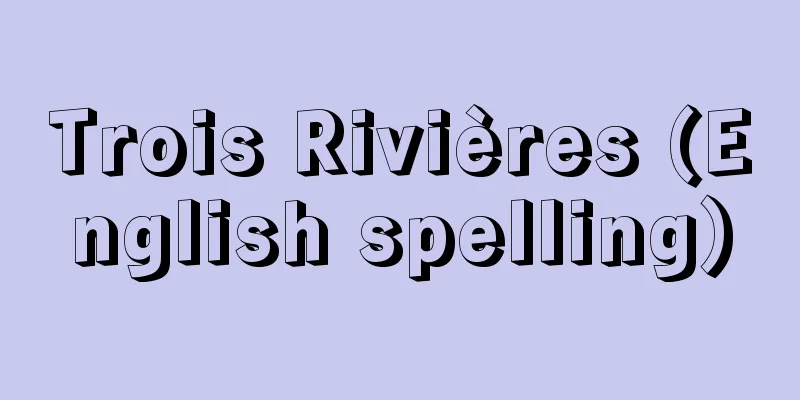Quenching - Yakiire (English spelling)

|
This is the most basic heat treatment technique for metal materials. In essence, it involves rapidly cooling from a high temperature state to a low temperature, which is a kind of artificial formation of a pseudo-equilibrium structure, so there is no point in using materials with the same structure at high and low temperatures. Typical suitable materials are steels and light alloys, as well as copper and nickel alloys. Quenching is not particularly difficult in theory or technology, except for steel, as it is done by solution treatment at high temperatures followed by rapid cooling, but steel is somewhat unique. Carbon steel has an austenite structure at high temperatures, and when cooled slowly, this becomes ferrite + pearlite, cementite + pearlite, or bainite, but when quenched, it becomes martensite. When fully tempered as martensite, it becomes a steel with a good balance of strength and flexibility, so in the case of steel, the quenching effect is judged by the amount of martensite produced (→ mass effect). The actual method of quenching is to plunge the hot steel into water or oil, stir it, and quench it so that there is no uneven quenching caused by the adhesion of a vapor film. Water has a high specific heat and good cooling ability, but rapid cooling beyond the critical cooling rate is unnecessary, so oil, which has a high boiling point and causes little uneven quenching, is also used. Martensite expands when it is formed, so there is a risk of quenching and cracking. To prevent this, a step-quenching method such as marquenching (→ martempering) was devised. In addition, alloy steels containing nickel, chromium, manganese, etc. have a low critical cooling rate, so they can be quenched safely without rapid cooling. Swordsmiths of Japanese swords use quenching in reverse. If insulating clay is applied only to the ridge of the blade and then quenched in water, only the blade will quench and expand as it hardens, creating the beautiful "warping" characteristic of Japanese swords. (→ TTT curve) Source: Encyclopaedia Britannica Concise Encyclopedia About Encyclopaedia Britannica Concise Encyclopedia Information |
|
最も基本的な金属材料の熱処理技術。要は高温状態を急冷して低温まで凍結することで,いわば偽平衡組織の人工的形成であるから,高温と低温の組織が同じ材料では意味がない。典型的適応材料は鉄鋼類と軽合金類で,他に銅合金,ニッケル合金にもある。鉄鋼以外の焼入れはすべて高温で溶体化処理後急冷するだけで,理論上でも技術的にもあまりむずかしくないが,鉄鋼のそれはやや特異である。炭素鋼は高温でオーステナイト組織で,ゆっくり冷却するとこれがフェライト+パーライト,セメンタイト+パーライトあるいはベイナイトになるが,焼入れるとマルテンサイトになる。マルテンサイトとして十分焼戻すと強度としなやかさのバランスのよい鋼となるので,鋼の場合はその生成量をもって焼入れ効果を判定する (→質量効果 ) 。焼入れの実際方法は高温の鋼を水または油中に突込んで攪拌し,蒸気膜付着による焼きむらのないように急冷する。比熱の大きい水は冷却能はよいが,臨界冷却速度以上の急冷は不必要なので沸点が高く焼きむらの少い油も使われるわけである。マルテンサイトは生成のとき膨張するので焼きそり,焼割れの危険がある。これを防ぐためマルクエンチ (→マルテンパー ) のような階段焼入れ法が考案された。またニッケル,クロム,マンガンなどを含む合金鋼は臨界冷却速度が小になるので,急冷しなくても安全に焼きが入る。日本刀の刀匠は焼きそりを逆に利用する。刀身の峰だけに断熱性の粘土を塗って水中に焼入れると,刃のほうだけ焼きが入って硬化とともに膨張するので,日本刀特有の美しい「そり」ができる。 (→TTT曲線 )
出典 ブリタニカ国際大百科事典 小項目事典ブリタニカ国際大百科事典 小項目事典について 情報 |
<<: Quenching oil - Yakiireyu (English spelling)
>>: Roasted sweet potato - Yakiimo
Recommend
Parasitic landlordism - parasitic landlordism
This agricultural management style was based on pr...
Diabelli, A. (English spelling) DiabelliA
…It was composed between 1819 and 1823, in parall...
Upari
(Transliteration of Upāli. Also written as Upāli o...
Huang Quan
[raw]? Died September 2, 965. A Chinese painter fr...
Palladino, E. (English spelling) PalladinoE
...As a result, they are not often the subject of...
Sea Life - Sea Life
...Even after getting married, they return to the...
The Ten Diaries of Yangzhou (English: The Ten Diaries of Yangzhou)
Written by Wang Xiuchu in the early Qing Dynasty, ...
Andreescu, I.
... The struggle against Academism began after 18...
Nitta Shrine
Located in Miyauchi-cho, Satsumasendai City, Kago...
Syndicated financing - Kyochouyuushi (English spelling) joint financing
When lending to a company, two or more banks form ...
Tuberculous arthritis
…In recent years, fungal infections have occasion...
Split collar marriage - Kakkinkon
...In the old Chinese marriage system, which requ...
Bonfigli, B. (English spelling) BonfigliB
... refers to a school of painting in the Umbria ...
Ibishin - Ibishin
...Later, his son (or brother) Ur-Nammu gained in...
Keiseiko - Keiseiko
A local nobleman from the Song Dynasty in China. ...









